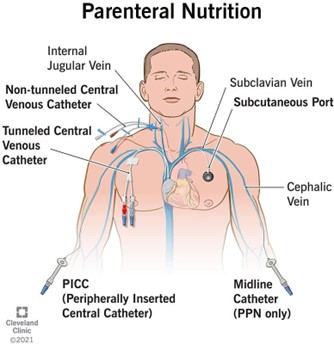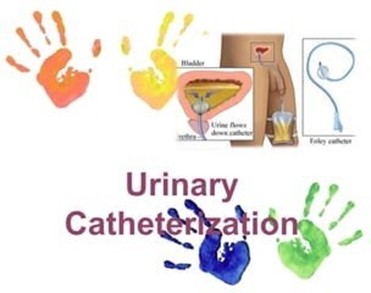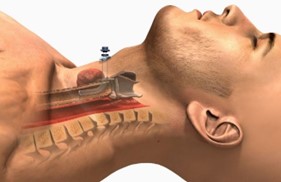The nurse provides care for a client who is severely malnourished. A central venous access device (CVAD) is placed to administer total parenteral nutrition (TPN). Which laboratory result does the nurse closely monitor?
Glucose
Cholesterol
Hemoglobin
Sedimentation rate
The Correct Answer is A
Total parenteral nutrition (TPN) is a form of nutrition that is administered intravenously when a client is unable to eat or absorb nutrients orally or enterally. TPN solutions contain a high concentration of glucose, which provides the body with energy. Therefore, the nurse must closely monitor the client's glucose levels, as TPN can cause hyperglycemia (high blood sugar levels).
Frequent monitoring of blood glucose levels is necessary to ensure that the client's blood sugar stays within an acceptable range. Hyperglycemia can lead to a variety of complications, including dehydration, electrolyte imbalances, and damage to organs such as the kidneys and eyes. If the client's blood glucose levels are consistently high, adjustments to the TPN solution may be necessary, or insulin may need to be administered to help regulate blood sugar levels.
Therefore, glucose is the laboratory result that the nurse must closely monitor when a client is receiving TPN via a central venous access device (CVAD).

Nursing Test Bank
Naxlex Comprehensive Predictor Exams
Related Questions
Correct Answer is ["A","B","D","E"]
Explanation
It is important to explain the procedure in detail before beginning to help the child understand what is happening and reduce anxiety. Having the child blow on a pinwheel during insertion can help distract them and reduce discomfort. A size 10 Fr catheter is appropriate for a toddler-age child ¹². Inserting 2% lidocaine lubricant into the meatus can help reduce discomfort during the procedure.
On the other hand, inserting the catheter about 5 cm may not be appropriate as the depth of insertion varies depending on the child's anatomy. Using firm pressure if resistance is met is not recommended as it can cause injury to the urethra.

Correct Answer is D
Explanation
It is important to use the appropriate suction pressure, time, and catheter size when suctioning a tracheostomy to prevent injury and ensure effective removal of secretions.

Whether you are a student looking to ace your exams or a practicing nurse seeking to enhance your expertise , our nursing education contents will empower you with the confidence and competence to make a difference in the lives of patients and become a respected leader in the healthcare field.
Visit Naxlex, invest in your future and unlock endless possibilities with our unparalleled nursing education contents today
Report Wrong Answer on the Current Question
Do you disagree with the answer? If yes, what is your expected answer? Explain.
Kindly be descriptive with the issue you are facing.
